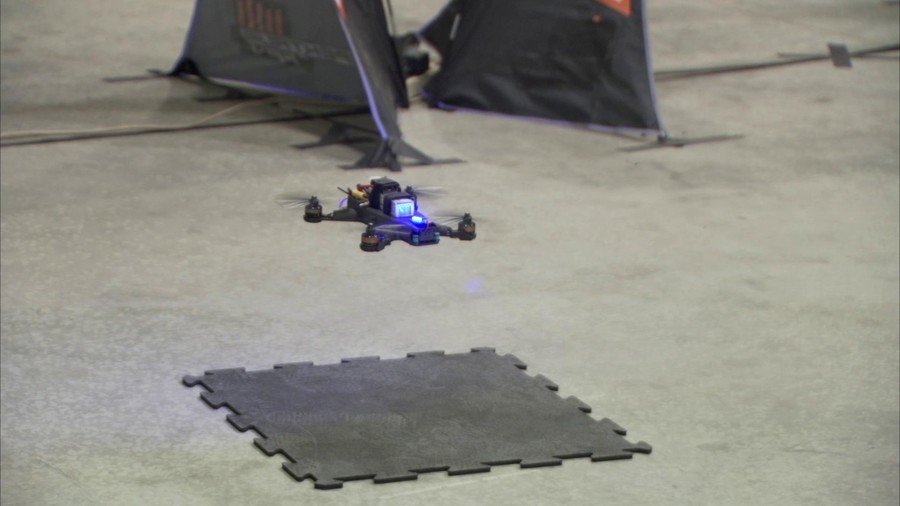NASA engineers have tested their new drone, controlled by artificial intelligence, against one piloted by a professional human. The project was part of a two-year research program into drone autonomy, funded by Google.
Engineers from NASA’s Jet Propulsion Laboratory (JPL) in Pasadena, California, put their work to the ultimate test by racing the AI creation against one controlled by a world-class drone pilot, Ken Loo.
The NASA team built three custom drones (impressively named Batman, Joker and Nightwing) with “complex algorithms” to help the drones fly at high speeds while avoiding obstacles.
READ MORE: Uber partners with NASA on flying taxi project (VIDEO)
While the drones could “easily” go as fast as 80mph (129kph) in a straight line, on the obstacle course they could only reach speeds of 30 or 40mph before needing to apply the breaks.
The drones each completed laps of a twisting obstacle course set up in a JPL warehouse to find out once and for all who is superior in this modern day man vs machine war… or something.
The AI drone used cameras to track its position against a pre-loaded map, while Loo used just his well-honed God-given gift to defy the human limits of speed and hand-eye co-ordination.
READ MORE: NASA’s new Mars drone to scout for human habitation sites (VIDEO)
Evidently, the AI drone averaged a mere 13.9 seconds per lap while Loo raced around the track at an average speed of 11.1 seconds per lap – dispelling any illusions about our forthcoming robotic overlords.
It’s worth noting that the AI drone completed the course with more accuracy than Loo, but let’s not allow that small fact to take away from humanity’s triumph.
Engineers hope the technology could enable drones to assist with inventory checks in warehouses or assist search and rescue operations at disaster sites.
“They might even be used eventually to help future robots navigate the corridors of a space station,” according to NASA.


